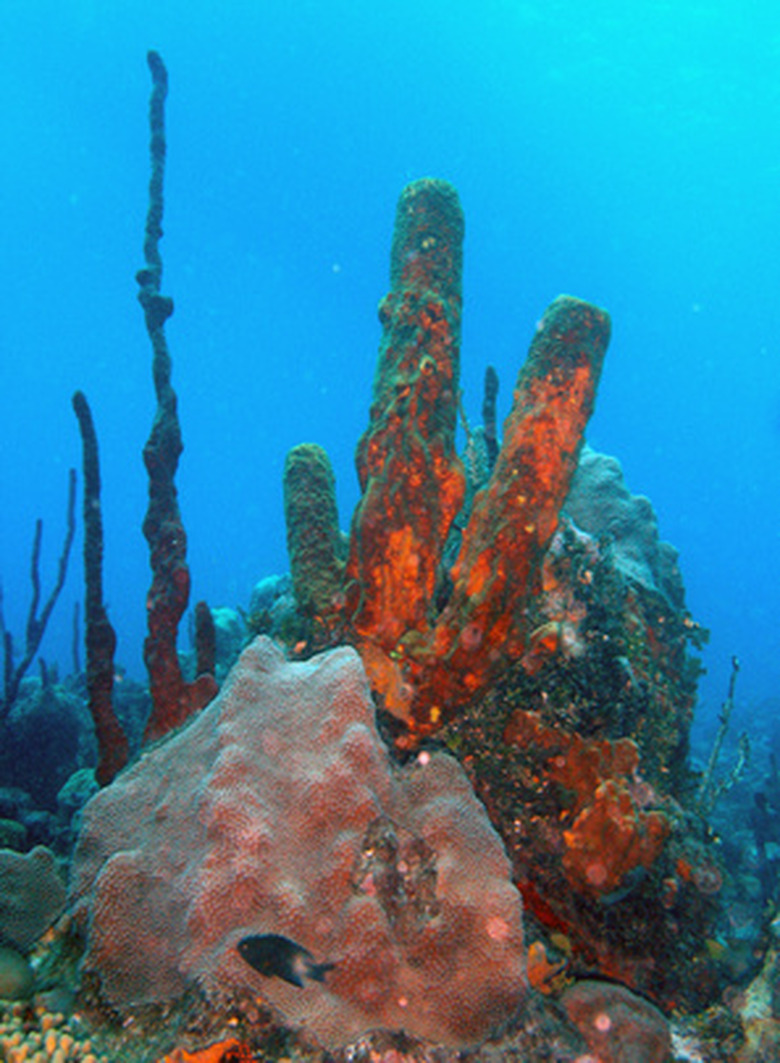Mutualism In Coral Reefs
Mutualism is a type of symbiotic relationship in which two organisms live in close proximity and both benefit from the relationship. All symbiotic relationships are not mutualistic; if one organism benefits and the other doesn't, then it could be a symbiotic relationship, but not a mutualistic one.
Read more about symbiotic relationships in coral reefs.
One of the most well-known examples of mutualism in coral reefs is the clown fish and the anemone, but there are many other mutualism examples in the ocean.
In this post, we're going over the definition of mutualism and some types of mutualism examples in the ocean.
Types
Types
There are two primary types of mutualism that apply on the coral reef: trophic mutualism and defensive mutualism.
Trophic mutualism occurs when both species receive a similar benefit through transfer of energy and nutrients. One of the best trophic mutualism examples in the ocean is animal-algal mutualism, such as with coral polyps and dinoflagellate algae.
When a dinoflagellate lives in a coral, it is called a zooxanthellae. The coral uses photosynthesis byproducts of the zooxanthellae as food, and the coral secretes a mucus-like substance that protects the zooxanthellae. The coral also protects the zooxanthellae from organisms that might eat it and the intense ultraviolet light that might kill it.
Defensive mutualism occurs when one species receives food and shelter in return for protecting its partner from predators. For example, with the mutualism between the sea star and the scale worm, the scale worm lives in or near the sea star's mouth. As the sea star eats, the scale worm gets leftover pieces of food. Conversely, if a predator tries to attack a sea star, the scale worm uses its sharp pincer-like jaws to bite the predator.
Complete Dependence
Complete Dependence
In some mutualistic relationships, a species may be so dependent on its partner that it can't survive with it. This is called obligate mutualism. The animal-algal mutualism that exists between a coral polyp and a zooxanthellae is an example of obligate mutualism in coral reefs.
The coral bleaching phenomenon occurs when zooxanthellae are expelled by the coral, in which case eventually the coral will die. The algae and coral relationship is so intertwined that one cannot survive without the other.
Independence
Independence
On the other hand, facultative mutualism exists when each species gets benefit from the other, but they aren't so dependent that they can't survive without the other. Unlike the algae and coral relationship we just went over that's obligate mutualism, the anemone and clown fish is an example of facultative mutualism.
The clown fish brings food to the anemone while the anemone wards off predators with its stinging polyps. However, the clown fish could live in another type of home and the anemone could capture food from the water without being fed by the anemone.
Shifting Relationships
Shifting Relationships
The exact nature of a relationship between species may shift from neutral to positive to negative. These changes occur over time, with changing environmental conditions, or because of changes in the organism communities.
Coevolution
Coevolution
The symbiotic relationship that occurs in a mutualistic partnership, especially in an obligate mutualism, creates a situation where coevolution may occur. Coevolution is a process that occurs when the genetics of one species changes in response to genetic changes in another species. Coevolution helps both species survive.
With the algae and coral relationship, they likely evolved over time together in order to form the mutualistic relationship they have today. For example, the coral may have evolved to use photosynthesis as a result of the algae's byproducts in the environment that allow for photosynthesis.
Cite This Article
MLA
Roberts, Susan. "Mutualism In Coral Reefs" sciencing.com, https://www.sciencing.com/mutualism-coral-reefs-6670988/. 22 November 2019.
APA
Roberts, Susan. (2019, November 22). Mutualism In Coral Reefs. sciencing.com. Retrieved from https://www.sciencing.com/mutualism-coral-reefs-6670988/
Chicago
Roberts, Susan. Mutualism In Coral Reefs last modified March 24, 2022. https://www.sciencing.com/mutualism-coral-reefs-6670988/
